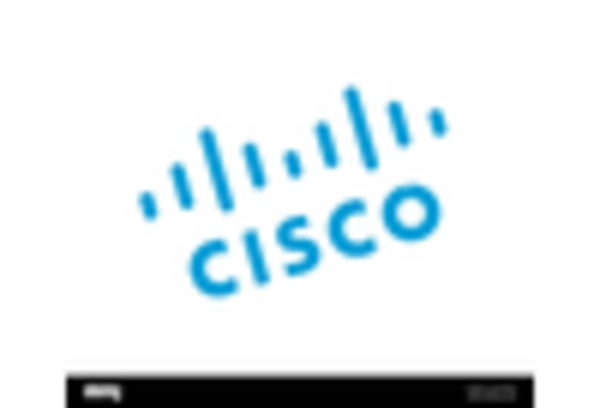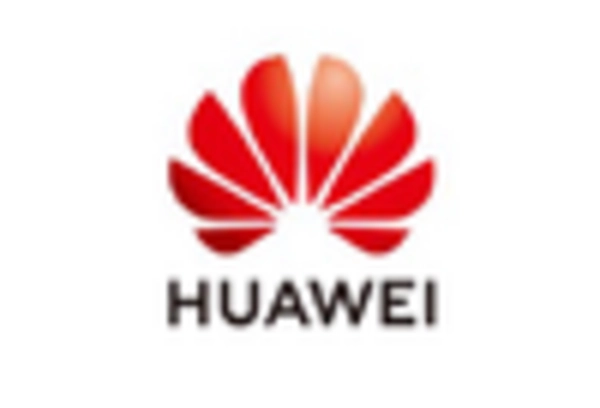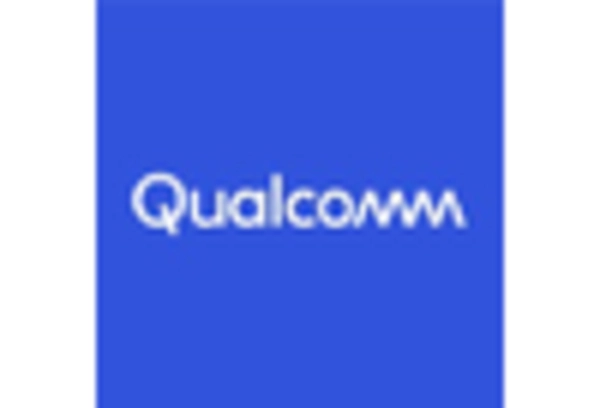Emergence of Smart Cities
The emergence of smart cities is significantly impacting the wireless connectivity market. As urban areas increasingly adopt smart technologies to enhance efficiency and sustainability, the demand for advanced wireless infrastructure is growing. In the US, numerous cities are implementing smart solutions, such as intelligent traffic management systems and connected public services, which rely heavily on reliable wireless connectivity. This trend is expected to drive investments in wireless networks that can support the vast amounts of data generated by smart city applications. Furthermore, the integration of wireless connectivity into urban planning is likely to foster collaboration between technology providers and city planners, creating opportunities for innovation and growth within the wireless connectivity market.
Surge in IoT Device Adoption
The wireless connectivity market is experiencing a notable surge in the adoption of Internet of Things (IoT) devices. As more households and businesses integrate smart technologies, the demand for robust wireless connectivity solutions intensifies. In the US, it is estimated that the number of connected IoT devices will reach approximately 30 billion by 2030, creating a substantial need for reliable wireless networks. This trend is likely to drive investments in infrastructure and services that support seamless connectivity. The proliferation of IoT applications across various sectors, including healthcare, manufacturing, and smart cities, further emphasizes the critical role of wireless connectivity in enabling efficient communication and data exchange. Consequently, the wireless connectivity market is poised for significant growth as it adapts to the evolving landscape of interconnected devices.
Government Initiatives and Funding
Government initiatives and funding play a pivotal role in shaping the wireless connectivity market. In the US, various federal and state programs are aimed at enhancing broadband access, particularly in rural and underserved regions. The Federal Communications Commission (FCC) has allocated substantial funds to support the expansion of wireless infrastructure, which is expected to facilitate greater connectivity for millions of Americans. These initiatives not only aim to bridge the digital divide but also stimulate economic growth by enabling businesses to thrive in a connected environment. As a result, the wireless connectivity market is likely to benefit from increased investments and partnerships between public and private sectors, fostering innovation and improving service delivery across the nation.
Rising Demand for High-Speed Internet
The wireless connectivity market is significantly influenced by the rising demand for high-speed internet services. With the increasing reliance on digital platforms for work, education, and entertainment, consumers and businesses alike are seeking faster and more reliable internet connections. According to recent data, approximately 85% of US households now have access to broadband internet, with a growing preference for wireless solutions. This trend is expected to propel the expansion of wireless networks, particularly in underserved areas where traditional wired connections may be limited. As service providers strive to meet consumer expectations, investments in advanced wireless technologies, such as 5G and Wi-Fi 6, are likely to accelerate. This heightened focus on speed and reliability is anticipated to drive growth within the wireless connectivity market, as stakeholders respond to the evolving needs of users.
Shift Towards Remote Work and Learning
The wireless connectivity market is witnessing a transformative shift towards remote work and learning. As organizations and educational institutions adapt to new operational models, the demand for reliable wireless connectivity solutions has surged. This trend is particularly pronounced in the US, where a significant portion of the workforce continues to work remotely. According to recent surveys, over 60% of employees express a preference for hybrid work arrangements, necessitating robust wireless networks to support seamless communication and collaboration. Educational institutions are also investing in wireless technologies to facilitate online learning, further driving demand. Consequently, the wireless connectivity market is likely to experience sustained growth as it addresses the evolving needs of remote work and education, ensuring that users remain connected and productive.
















Leave a Comment